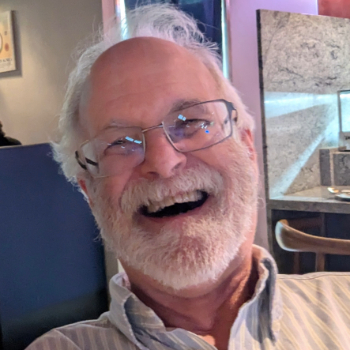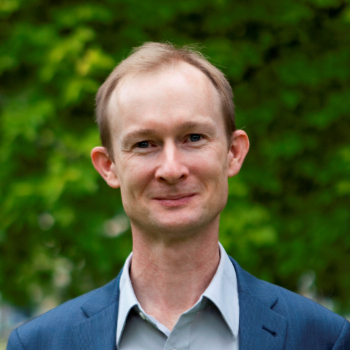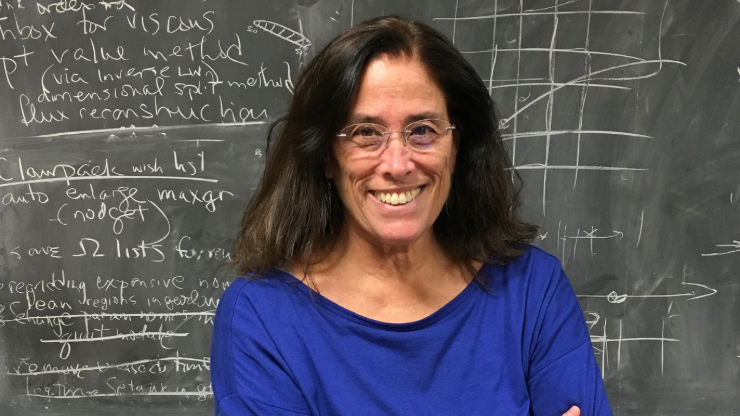2025 May Prize Spotlight
Congratulations to the following SIAM prize recipients who will be recognized at the 2025 Conference on Applications of Dynamical Systems (DS25), taking place on May 11-15, 2025 in Denver, Colorado.
• Bard Ermentrout—Jürgen Moser Lecture
• Gary Froyland— J. D. Crawford Prize
Bard Ermentrout
Dr. Bard Ermentrout will deliver the 2025 Jürgen Moser Lecture at the 2025 SIAM Conference on Applications of Dynamical Systems. He was selected to deliver the lecture “for his broad and seminal contributions to mathematical biology, including pioneering work on mathematical and computational neuroscience, dynamical systems, and pattern formation.” The talk, titled “Not Just Another Pretty Phase: The Use of Phase Models in Neuroscience and Biology,” will be given on Sunday, May 11 at 8:45 p.m. MDT.
The SIAM Activity Group on Dynamical Systems awards the Jürgen Moser Lecture every two years to an individual who has made distinguished contributions to nonlinear science. The term “nonlinear science” is used in the spirit of the SIAM Activity Group on Dynamical Systems conferences. Specifically, it includes dynamical systems theory and its applications as well as experiments, computations, and simulations.

Dr. Ermentrout is a Distinguished University Professor of computational biology and a professor of mathematics at the University of Pittsburgh. He received his Ph.D. from the University of Chicago (1979). After a three-year fellowship at the National Institutes of Health, he came to the University of Pittsburgh as an assistant professor. Dr. Bard's research focuses on applying nonlinear dynamics to biological systems, particularly neuroscience and understanding patterns of activity such as waves and oscillations. He is known for his widely used software package, XPPAUT, and the book he co-authored with David Terman, Mathematical Foundations of Neuroscience. Learn more about Dr. Ermentrout.
Dr. Ermentrout, a life-time SIAM member and 2012 SIAM Fellow, has been an active member of the SIAM community for 31 years. He has previously served on SIAM Journal on Applied Dynamical Systems editorial board (2001-14), the Jürgen Moser Lecture Prize Selection Committee (2004-05), an Advisory Board member for the SIAM Activity Group on Dynamical Systems (2006-07), and Vice Chair of the SIAM Activity Group on Life Sciences (2007-08). He was also a member of the SIAM Fellows Selection Committee (2018-20).
Q: Why are you excited to receive the award?
A: SIAM’s conferences on dynamical systems are the only meetings I never miss. I have been a regular participant since at least in the 90's. I am very honored to be able to give the Jürgen Moser Lecture.
Q: What does your work mean to the public?
A: My work intersects both basic research in the biological sciences as well as more practical aspects of medicine. One of my recent projects is a collaboration with a neuroscientist at the Mayo clinic where we are developing a computational model for the rhythmic contractions in the large bowel. We are using the model to study how inflammation can disrupt the regular oscillations which are necessary for normal function—in other words, everyone needs to poop! In another project, my student and I are trying to understand the mechanisms that lead to oscillations and waves recorded from human subjects while they do simple memory tasks. Everyone likes fireflies, and my collaborators and I have been working on understanding how large swarms of them are able to synchronize their flashes.
Q: Could you tell us about the research that won you the award?
A: My research is in the applications of dynamical systems to problems in the biological sciences, and in particular, neuroscience. My earliest work concerned mathematical models for the spatio-temporal dynamics in populations of neurons such as traveling waves and visual hallucinations. With Nancy Kopell, we developed a comprehensive theory for discrete chains of coupled oscillators and applied this to the understanding of motor patterns in the small intestine and to the swimming cycle for the lamprey. With other students, I developed theories and existence proofs for spiral waves in two-dimensional networks of oscillators. With John Rinzel, we showed that the different firing patterns in neurons were directly related to the waves in which limit cycles can bifurcate from equilibria.
Q: What does being a member of SIAM mean to you?
A: I have been a member of SIAM for many years; It is a great community with whom I can easily converse and jump into new collaborations. It is the only academic society which I have always belonged to. I enjoy reading SIAM News both in paper and online, and it often gives me great examples in the modeling and applied math classes that I teach.
Interested in submitting a nomination for the Jürgen Moser Lecture? The prize next opens for nominations on May 1, 2026.
Gary Froyland
Dr. Gary Froyland is the recipient of the 2025 J. D. Crawford Prize. He received the award for "spectral analysis of climate dynamics with operator-theoretic approaches" in Nature Communications, which significantly advances the theory of complex fluid flow, with application to climate science. He will be recognized at the 2025 SIAM Conference on Applications of Dynamical Systems on Sunday, May 11 at 8:30 p.m. MDT.
The SIAM Activity Group on Dynamical Systems awards the J. D. Crawford Prize every two years to one individual for recent outstanding work on a topic in nonlinear science, as evidenced by a publication in English in a peer-reviewed journal within the four calendar years preceding the award year. The term “nonlinear science" is used in the spirit of the SIAM Activity Group on Dynamical Systems conferences. Specifically, it includes dynamical systems theory and its applications as well as experiments, computations, and simulations.

Dr. Froyland is Scientia Professor of mathematics at the University of New South Wales (UNSW Sydney), specializing in dynamical systems, machine learning, and optimization. His research spans pure and applied mathematics, with applications in industry and other scientific disciplines. He currently leads the Australian Research Council Laureate Centre for Dynamical Systems and Data at UNSW Sydney. Learn more about Dr. Froyland.
Dr. Froyland has been a member of SIAM for 18 years. He has served on the editorial board for the SIAM Journal on Applied Dynamical Systems since 2019 and was named a 2021 SIAM Fellow. Additionally, he was a member of the Jürgen Moser Lecture Prize Selection Committee (2020-21), the SIAM Fellows Canvassing Committee (2022-23), and the organizing committee of the 2023 SIAM Conference on Applications of Dynamical Systems.
Q: Why are you excited to receive the award?
A: It's gratifying to have the work I've done with my colleagues recognized in this way, and in my view, the award belongs equally to them. There is so much exciting research at the moment in dynamical systems. The field has a very healthy future and a lot to contribute to science and society.
Q: What does your work mean to the public?
A: I'm interested in several different aspects of dynamics. Nonstationarity, or time-dependence of the governing laws of processes, makes these processes more difficult to analyze by standard means, and some of my work addresses this. Another aspect is extracting information on differing temporal and spatial scales, particularly those scales that are longer or larger and reflect what humans observe in the natural world. Statistical properties of processes are also important, for example, the behavior of fluctuations that diverge from the average and the likelihood of large excursions that lead to extreme events. In addition to the theory underlying these aspects, there are important computation issues related to working directly with data. In fact, nowadays, physics-based models are, to some extent, being replaced by data, and I am interested in developing reliable and efficient algorithms for dynamic data.
Q: Could you tell us about the research that won you the award?
A: There were two main pieces of research. The first concerned a transfer operator approach for extracting long-lived cycles from time series, where the elements of the time series could be high-dimensional, for example a temporal sequence of images. This was joint work with Dimitris Giannakis, Joanna Slawinska, Benjamin Lintner, and Max Pike. We showed that the arguments of the leading complex eigenvalues of the transfer operator provide the frequencies of nonlinear cycles embedded in the system. As an application of this research, we extracted a canonical representation of a strong El-Nino Southern Oscillation cycle based on spatial fields of sea-surface temperature.
The second piece of research concerned an extension of the dynamic Laplace operator to time-extended domains. The dominant eigenfunctions of the dynamic Laplacian encode coherent regions in time-dependent dynamical systems. In many real-world settings, coherent sets are continually forming and dissipating, and by constructing an inflated dynamic Laplacian on a spatiotemporal domain, we can capture this emergence and disappearance across time in a single eigencomputation. This was joint work with Peter Koltai.
Q: What does being a member of SIAM mean to you?
A: I've been a member of SIAM for many years, and I've very much enjoyed being part of this family. SIAM’s conferences on the applications of dynamical systems is a highlight of my travel calendar; I always look forward to hearing about new ideas and catching up with old friends.
Interested in submitting a nomination for the J.D. Crawford Prize? The prize next opens for nominations on May 1, 2026.
Related Reading
Stay Up-to-Date with Email Alerts
Sign up for our monthly newsletter and emails about other topics of your choosing.





